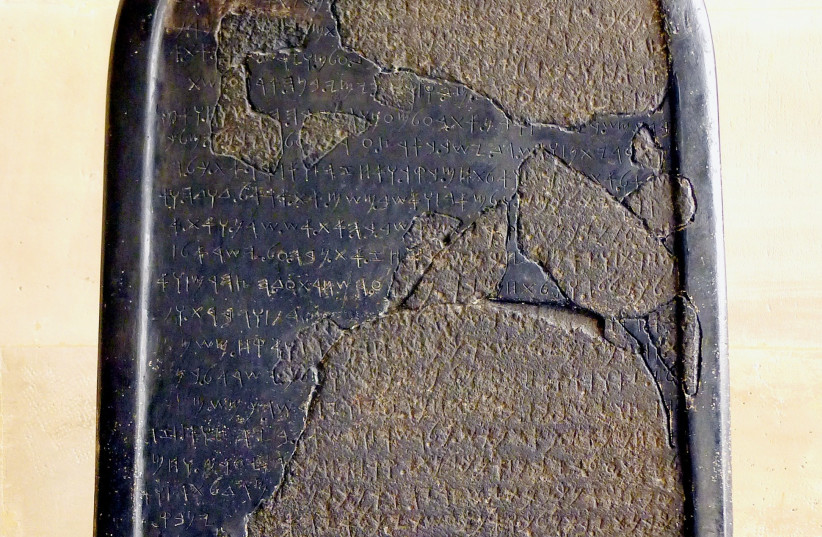by Jerusalem Post Staff
The stele was discovered in fragments in 1868 roughly 15 miles east of the Dead Sea and currently resides in the Louvre museum in Paris.
 |
Detail of a portion of lines 12–16, reconstructed from the squeeze. The middle line (14) reads "Take Nabau against Israel."
(photo credit: Wikimedia Commons)
|
The Mesha Stele, also called the Moabite Stone, is a basalt stone slab that has provided historians and linguists with the largest source of the Moabite language to date. Researchers have only now been able to verify with a considerable degree of certainty that the stele contains explicit references to King David.
The stele was discovered in fragments in 1868 roughly 15 miles east of the Dead Sea and currently resides in the Louvre museum in Paris. While it was damaged in 1869, a paper-mache impression of the inscription was captured before the damage occurred.
The slab is etched with a lengthy account of King Mesha of Moab going to war with Israel. The events described correspond, albeit imprecisely, with a similar account in 2 Kings chapter 3.
The House of David
The text contains allusions to the Israelite god as well as the "House of David" and the "Altar of David." However, until today, scholars could not be entirely sure that these references to King David were being correctly deciphered.

The Moabite phrase "House of David" consists of five letters: bt dwd. "Bt" is similar to today's Hebrew word for house - bayit - which is beit in its construct form. And "dwd" can be thought of like modern Hebrew's daled vav (the letter, in this case, is actually waw) daled which spells the name "David."
Until now, only the first and fourth letters of the series, bet and waw were completely clear. In a late-2022 article entitled "Mesha's Stele and the House of David" in the winter issue of Biblical Archeology Review researchers André Lemaire and Jean-Philippe Delorme re-examined the evidence. They write:
"In 2015, a team from the West Semitic Research Project of the University of Southern California took new digital photographs of both the restored stela and the paper squeeze. The team used a method called Reflectance Transformation Imaging (RTI), in which numerous digital images are taken of an artifact from different angles and then combined to create a precise, three-dimensional digital rendering of the piece.
"This method is especially valuable because the digital rendering allows researchers to control the lighting of an inscribed artifact, so that hidden, faint, or worn incisions become visible."
More recently in 2018, the Louvre took these new, high-resolution pictures and projected light onto them coming directly through the 150-year-old squeeze paper. Thus, researchers were able to glean a much clearer picture of the ancient records. This, explain Lemaire and Delorme, is how they were able to see evidence of the other three letters, taw (like modern Hebrew tav), dalet, and dalet.
How similar are Moabite and Ancient Hebrew?
Encyclopedia Britannica characterized the relationship between Moabite and the Hebrew of its time as differing "only dialectically." According to Dearman and Jackson's 1989 book Studies in the Mesha Inscription and Moab: “It is probable that Moabite and Hebrew were, for the most part, mutually intelligible.”
Jerusalem Post Staff
Source: https://www.jpost.com/archaeology/article-728354
No comments:
Post a Comment